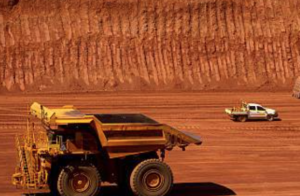#RioTinto #CopperMine #NativeAmericans #OakFlat #9thCircuit #RenewableEnergy #EnvironmentalLaw #SupremeCourt
In a decision that reverberates through the intersections of environmental advocacy, indigenous rights, and the renewable energy sector, the US federal appeals court has narrowly ruled in favor of Rio Tinto Plc, granting them access to thousands of acres in Arizona for a copper mine. This contentious plan, backed by the court’s latest ruling, forms a pivotal chapter in the ongoing saga between the fervent industrial push for renewable energy resources and the preservation of cultural and religious sanctities.
At the heart of the dispute lies Oak Flat, a federally owned parcel of land in eastern Arizona, which, while poised atop a substantial reserve of more than 40 billion pounds of copper crucial for electric vehicles and the renewable energy transition, holds deep religious and cultural significance for the Apache people. Native Americans, particularly members of Arizona’s San Carlos Apache tribe, view Oak Flat as a home to deities, and the construction of a mine, which would result in a crater 2 miles wide and 1,000 feet deep, threatens to obliterate this sacred worship site.
The story of Oak Flat is not a new one, tracing back to a 2014 decision by the US Congress and then-President Barack Obama, which sanctioned the land to Rio for its Resolution Copper project. This decision was upheld by a 6-5 ruling from the San Francisco-based 9th US Circuit Court of Appeals, a decision made after an exhaustive en banc review by all 11 members of the court. Despite the shift to a full-court deliberation, the outcome remained in favor of the land transfer, perpetuating the strife of the Apache and their allies.
The court’s ruling has sparked a plethora of reactions, with opponents, including Apache Stronghold—a nonprofit group advocating for the preservation of Oak Flat—vowing to escalate their fight to the US Supreme Court. The crux of their argument lies in the loss of a site that is not only of profound spiritual importance but also an emblem of environmental stewardship and ancestral heritage. However, proponents of the copper mine, including Rio Tinto, argue for the economic benefits and the critical role of the copper in fueling the renewable energy transition, highlighting an age-old conflict between development and preservation.
Significant to this legal and moral battle was an environmental report mandated by the 2014 law, which was published by the Trump administration shortly before leaving office. This move was temporarily counteracted by President Joe Biden, who delayed the land exchange to review the Apache’s concerns. However, Biden’s intervention has so far not culminated in a permanent blockage of the mine, leaving the future of Oak Flat in uncertainty.
The Resolution project has been marked by dialogue and controversy, with Rio Tinto expressing a readiness to engage with concerned tribes despite the judicial green light. Yet, the ruling underscores a larger dilemma faced by modern society: how to balance the escalating demands for renewable energy resources with the imperative to protect sacred lands and uphold the rights and traditions of indigenous peoples.
This moment in legal and environmental history, underscored by a narrow judicial ruling, reflects the complex layers of policy, culture, and environmental ethics that define the global transition toward renewable energy. As the discourse unfolds, the story of Oak Flat emerges not just as a local or national controversy but as a symbol of the global struggle to redefine the boundaries of progress, preservation, and the sanctity of the natural and spiritual world.







Comments are closed.